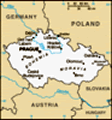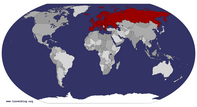Advertisement
Uncle Roland’s Long Walk
Captain Webster, Marion’s Uncle, the doctor, was constantly making protests about the conditions that the Russians were enduring in Lamsdorf. So much so, Marion believes, that he was given a new assignment to care for largely Russians, but all soldiers from Stalags in the area in a larger hospital at Kozle, 63km from VIIIB.
Today we found ourselves in one of the points Kozle’s star shaped defensive moats, constructed after the Silesian Wars of 1740-42 and 1744-45 and finished in 1765. It’s a beautiful spot with signboards for a ‘Citywalk’, trees, birdsong, allotments, an arsenal and more.
At the very tip of one star point there is now ‘BSP’s’ builder’s yard, but in 1943 it was the hospital Roland was sent to. It’s fitting that this would become his base, as Berwick, his home town, uses the same defensive rampart system.
Two other hospitals in the town helped in with supplies and support. One was part of the old outer castle of 1563 which was converted to the garrison hospital in 1807 and still was in use in WWll. The other was Dom św. Karola convent (1912) down by the River Oder, which became a hospital for the wounded and sick in WWl and WWll. The three hospitals are in a line within a Km of each other (thanks Tom Atkins for the map).
In January 1945, with Russian forces advancing, Hilter ordered all the Stalags and their work camps to mobilise and start marching towards Germany. Rail networks had been heavily bombed and cattle truck transport would have been disrupted, but more importantly, marching meant that Allied prisoners, Jewish workers and others in custody were less likely to join forces with the Russian forces once captured. Despite being a hospital group, Roland and his team were expected to follow the same orders and after many official complaints and conditions established, a body of men (268 Brits, Russians, and French) able to be moved, set off westward. They pushed /pulled a ‘crops waggon’ with medical supplies and records and pulled sledges, a Red X parcel to each man, an extra 400 cigarettes and all clothing and new boots available. We set off travelling Captain Roland Webster’s route in our hire car.
The first leg of the march, 21/1/45, was 12km
long, and it was, as we saw today, relatively flat, straight and a good starter trial for what was to come. But the conditions -14 degrees centigrade, snow and wind made the going very hard, almost impossible. They stopped at a village called Gieraltowice lodging in the school house and, in cramped conditions depended upon their own rations.
We parked by the church today and man in farming overalls came out to greet us and was very welcoming. Interestingly, his first language is German. We scratched by in communicating our purpose for being there. He enthusiastically took us to another house but the occupant, an English speaker, wasn’t in. His sister was, who also spoke in German not Polish. They were charming but our information gathering stopped there because of language. There were lots of yellow and white Silesian flags, one at each household. And Silesians would have been German speakers at WWll time. We wondered what their family’s story was, and how they came to still live in Gieraltowice, considering the voracity of the Soviet regime post war?
The town itself is atypical of most we'd seen in the region so far, in that the
majority of the houses are old, single story buildings of rendered brick, pre-dating get the world wars. It seemed that it would be quite similar to the way it looked in 1945.
Roland managed to stay at this billet for three days by making a series of formal complaints to the German officer in charge, the SA. They started to successfully barter with town folk for food (spuds) with cigarettes and other Red Cross Parcel goodies. The sound of gunfire from Kozle was clearly audible.
Then onward for a longer trek to Groburg (now Grobnick). Again they found school rooms but with more space. They got ahold of better food here as well. Our main observation was that the terrain is already much more hilly on this stretch. We parked outside the church where there were a number of buildings which could have been the school. Bizarrely, as the clock struck three, 2018, there were three verses of a hymn played by a horn on some sort of sound system recording.
Roland complained again to his German SA (senior officer) who threatened him with the local Kommandant. He later backed down admitting if there was a real Kommandant, he did not know where he was. Roland noted ‘a 120 man sick parade today’ in his diary. Presumably the number of men who were needing specific medical attention.
On the 25.1.45, after two nights at Groburg, they moved on to Hotzenplatz, a further 18km, now with horses for the sledges. ‘
Passed many corpses on the road, political prisoners and Jews-shot thro’ head, these driven by the SS & Politzei, scantily clothed, many in clogs, v, v, emaciated’. They were billeted at the ‘League of German Girls’ barracks with ‘hot coffee straight away’ and ‘two girls in shorts and brown shirt threw open the vegetable cellars for our use, spuds etc. Also coal as much as anyone wanted. Had heavy air raid v. near’. Hotzenplatz is now Osoblaha in the Czech Republic. This consists mostly of new housing and was more difficult to get a feel for the 1945 world. For us it was raining ……….. but at a comfortable 18 degrees centigrade.
We did manage to find a Jewish Cemetery next to an
all new, post war square, perched on the highest point in town. This was not in CW’s diary but was of interest.
’27.1.45 all officers and staff up by 7.30am. Fed well …. coffee and soup all from material bludged in this excellent billet. Got 6 small horse drawn sledges for men not able to walk and moved off at 11am, approx……. Got on to bleak Table land with high wind after stiff hill climb with our vehicles pulling.’ The plateau he talked of was clear to us, and after a climb. It was here that ‘every 50 paces passed a prisoner shot thro’ head, 15 in a row along the straight road’.
We found a school with architecture old enough to have been the one mentioned as this night’s billet in CW’s diary. But I t’s becoming clear that we can only get a sense of place and scale of the walk, but that detail of particular buildings will be very speculative.
At Łaka Prudicka (Graflich Wiese) we found up Szkolna, School Street, but couldn’t find the school. ‘Men were dossed down in a school on main Rd. 3 rooms, no light at all. Lights in area now out due to Russians taking Oppelin (Opole), v. V. Crowded. had to clean much ‘lousy’ straw out first’.
Roland was very clear of the Typhus danger of lice and kept high standards.
28/1/45. It’s snowing hard today. Arranged in morning that we should not move. Too many evacuees on the road and too many people held up. We are going to have two soups today to keep men fit. RSM killed 2 calves “for us’, given by the man in charge of the Schloss and Dominion Farm where some British are. 29.1.45. V.v. Cold with snow falling all the time as we climb into open wind and snow, cutting cold. But made good time with our peculiar transport to Ludwigsdorf, a thin long village 5 Km long. We hung our big Black Maria on the back of a horse drawn sleigh and so relieved ourselves of much pulling. All settled well in. British and Serbs in a kind of concert hall over a pub, v good but crowded. Russians and French in big Schoolhouse. This is now
Charbielin where there was a long two story building at the roadside, that could well be an old inn, with nearby brick school and church.
30/1/45 'This morning v good Geschaft (bargaining, bartering, bludging as CW calls it earlier). Eggs for Breakfast and good soup before the march started. We left about10.30. …… Made to turn off by military police up a steep hill ….. first mile mainly vertical, then on top we found a big military vehicle stuck. We waited. Early an hour, then forced our way through and over terrible ground for the next mile. …… we at last, after a difficult journey, but quite exciting, got to Giersdorf'. This is now called Gierałcice in Poland…… we agreed with Roland that it was a pretty town. It’s more hilly there providing different levels and a brook rolling through town. And it was friendly in 1945 too, they stayed for two days:
‘All the boys invited into house nearby for good tuck supper, meat etc. ( the country folk still have food and are not so frightened to use it now that checking up is relaxing with the Russians getting nearer’. 1/2/45 ‘All ready for the road at 11am. The Buromaster so pleased that we have taken sick off his hands, gives us seven sledges for sick transport. … 8 Km march over mountains really a 12 Km….. Jasienica Górna featured an Italianate square church tower and accompanying school. The church was open and had a stunning blue ceiling bearing a Maltese cross with a portrait of Christ in the middle.
And so the Long Walk continued … by 5/2/45 they were slowed by evacuating troops and ‘road blocks all the way over a mountain pass to Jauernig’. A steep climb to what is now Javornik to Travna continued up hill to a summit car park with a superb panorama looking south.
Then down to Radochów, Wolany at Ratno Górne less than an hour in our car but a further five days for the CW column of men, stopping at each of the places above.
Finally, ‘Got to Braunau (Broumov) a hilly town in a valley of mountains, very old, and compact, full of evacuees, soldiers, road blocks etc……. Captain Robin Robertson was already in the Elim Chapel with 60 sick British …. And nearly 400 v sick Russians in a factory near the station’.
Broumov is where they set up a field hospital in the Elim Church and treated sick as they passed though the town for the next three weeks.
And where we are staying in Vila Katerina, for two nights.
Advertisement
Tot: 0.194s; Tpl: 0.017s; cc: 12; qc: 34; dbt: 0.0893s; 1; m:domysql w:travelblog (10.17.0.13); sld: 1;
; mem: 1.1mb









